-
 Bitcoin
Bitcoin $106,731.2224
-1.05% -
 Ethereum
Ethereum $2,444.9804
-1.20% -
 Tether USDt
Tether USDt $1.0003
0.01% -
 XRP
XRP $2.1882
0.09% -
 BNB
BNB $651.1435
-0.61% -
 Solana
Solana $148.3252
-2.09% -
 USDC
USDC $1.0000
0.01% -
 TRON
TRON $0.2787
0.55% -
 Dogecoin
Dogecoin $0.1598
-3.16% -
 Cardano
Cardano $0.5520
-2.43% -
 Hyperliquid
Hyperliquid $39.0960
-2.64% -
 Bitcoin Cash
Bitcoin Cash $516.9519
2.98% -
 Sui
Sui $2.7011
-2.95% -
 Chainlink
Chainlink $13.0582
-1.71% -
 UNUS SED LEO
UNUS SED LEO $8.9250
-2.53% -
 Stellar
Stellar $0.2359
-0.18% -
 Avalanche
Avalanche $17.3856
-3.73% -
 Toncoin
Toncoin $2.8095
-3.56% -
 Shiba Inu
Shiba Inu $0.0...01121
-1.95% -
 Litecoin
Litecoin $85.2795
-0.85% -
 Hedera
Hedera $0.1471
-2.15% -
 Monero
Monero $319.8004
1.12% -
 Dai
Dai $1.0001
0.01% -
 Ethena USDe
Ethena USDe $1.0001
0.02% -
 Bitget Token
Bitget Token $4.5344
-1.07% -
 Polkadot
Polkadot $3.3224
-2.96% -
 Uniswap
Uniswap $6.9697
-2.75% -
 Aave
Aave $266.1658
-2.25% -
 Pepe
Pepe $0.0...09414
-3.41% -
 Pi
Pi $0.4913
-3.29%
What should I do if the market order of Bybit contract has a large slippage? How to reduce trading losses?
Large slippage on Bybit market orders can lead to losses; use limit orders, monitor market conditions, trade during high liquidity, and adjust order sizes to minimize it.
May 03, 2025 at 08:49 am
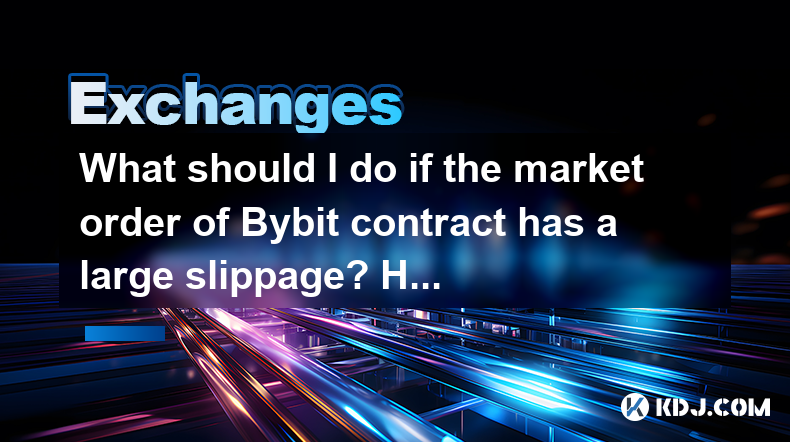
When trading cryptocurrency contracts on Bybit, one of the common issues traders face is large slippage on market orders. Slippage occurs when the price at which your order is executed differs from the expected price, leading to potential losses. This article will explore the causes of large slippage and provide detailed strategies to reduce trading losses effectively.
Understanding Slippage on Bybit
Slippage is a critical factor in trading that can significantly impact your trading outcomes. On Bybit, slippage happens when there is a delay between the time you place a market order and the time it gets executed. During this period, the market price may change, leading to an execution price that is less favorable than what you anticipated.
The primary reason for large slippage is market volatility. When the market is highly volatile, prices can change rapidly, and the difference between the bid and ask prices (the spread) can widen. This can result in your market order being filled at a price far from your expected entry point.
Another factor contributing to slippage is liquidity. If the market for a particular contract has low liquidity, there may not be enough buy or sell orders at your desired price level. As a result, your market order might need to be filled at a less favorable price to complete the trade.
Strategies to Reduce Slippage
To minimize the impact of slippage on your trades, consider the following strategies:
Use Limit Orders Instead of Market Orders
One of the most effective ways to reduce slippage is to use limit orders instead of market orders. A limit order allows you to specify the exact price at which you want your order to be executed. This can help you avoid the unpredictability of market orders.
- Open the Bybit trading platform.
- Navigate to the trading interface for the contract you wish to trade.
- Select the "Limit" order type.
- Enter the price at which you want to buy or sell the contract.
- Set the quantity of the contract you want to trade.
- Click "Buy" or "Sell" to place the order.
By using limit orders, you have more control over the execution price, which can help reduce slippage.
Monitor Market Conditions
Keeping an eye on market conditions can help you anticipate potential slippage. Use Bybit's charting tools and market indicators to assess the current volatility and liquidity of the market.
- Open the Bybit trading platform.
- Go to the chart for the contract you are interested in.
- Use indicators such as the Average True Range (ATR) to gauge market volatility.
- Check the order book to assess the liquidity of the market.
By understanding the market conditions, you can make more informed decisions about when to place your orders, potentially reducing the risk of large slippage.
Trade During High Liquidity Periods
Trading during periods of high liquidity can help minimize slippage. High liquidity means there are more buy and sell orders available at various price levels, increasing the likelihood that your order will be filled at a price close to your desired entry point.
- Monitor the trading volume and order book depth on Bybit.
- Identify times of the day or specific events that typically result in higher trading volumes.
- Place your orders during these high liquidity periods to reduce the risk of slippage.
By aligning your trading activities with periods of high liquidity, you can improve the chances of executing your orders at favorable prices.
Adjust Order Size
Another strategy to reduce slippage is to adjust the size of your orders. Large orders can have a more significant impact on the market, potentially causing prices to move against you. By breaking down your trades into smaller orders, you can minimize the impact on the market and reduce slippage.
- Determine the total quantity of the contract you want to trade.
- Divide this quantity into smaller, more manageable orders.
- Place these smaller orders sequentially, allowing each to be filled before placing the next.
By using smaller order sizes, you can reduce the risk of large slippage and improve your overall trading performance.
Reducing Trading Losses
In addition to minimizing slippage, there are several other strategies you can employ to reduce trading losses on Bybit.
Use Stop-Loss Orders
Stop-loss orders are essential tools for managing risk and limiting potential losses. A stop-loss order automatically closes your position when the market reaches a specified price level, helping you avoid significant losses.
- Open the Bybit trading platform.
- Navigate to the trading interface for the contract you are trading.
- Select the "Stop-Loss" order type.
- Enter the price at which you want the stop-loss order to be triggered.
- Set the quantity of the contract you want to close.
- Click "Place Order" to set the stop-loss.
By using stop-loss orders, you can protect your capital and reduce the impact of adverse market movements.
Implement Proper Risk Management
Risk management is crucial for successful trading. By setting clear risk parameters and sticking to them, you can minimize losses and protect your trading capital.
- Determine your risk tolerance and set a maximum percentage of your capital that you are willing to risk on a single trade.
- Use position sizing to ensure that each trade aligns with your risk parameters.
- Regularly review and adjust your risk management strategy based on your trading performance.
By implementing proper risk management, you can reduce the likelihood of significant losses and improve your overall trading results.
Diversify Your Trading Portfolio
Diversification can help reduce trading losses by spreading your risk across different assets and markets. By not putting all your capital into a single trade or asset, you can mitigate the impact of adverse price movements.
- Identify different cryptocurrency contracts available on Bybit.
- Allocate your capital across multiple contracts to diversify your trading portfolio.
- Monitor the performance of each contract and adjust your allocations as needed.
By diversifying your trading portfolio, you can reduce the risk of significant losses and improve your chances of achieving consistent returns.
Frequently Asked Questions
Q: Can I use a combination of limit and market orders to reduce slippage?
A: Yes, you can use a combination of limit and market orders to manage slippage. For example, you can place a limit order at your desired entry price and a market order to ensure execution if the market moves quickly. This strategy allows you to balance control over the execution price with the need for timely order fulfillment.
Q: How does Bybit's trading fee structure impact slippage?
A: Bybit's trading fee structure can indirectly impact slippage by affecting the overall cost of trading. Higher fees can reduce your net profit, making it more important to minimize slippage. However, Bybit's fee structure itself does not directly cause slippage; it is primarily influenced by market conditions and order types.
Q: Are there any tools or indicators on Bybit that can help predict slippage?
A: While Bybit does not have specific tools designed to predict slippage, you can use various indicators to assess market conditions that may lead to slippage. For example, the Average True Range (ATR) can help gauge market volatility, and the order book can provide insights into liquidity. By monitoring these indicators, you can make more informed decisions to reduce the risk of slippage.
Q: How can I monitor and analyze my trading performance to identify areas for improvement?
A: Bybit provides a trading history and performance analytics section where you can review your past trades. To monitor and analyze your performance:
- Open the Bybit trading platform.
- Navigate to the "Trade History" or "Performance" section.
- Review your past trades, including entry and exit prices, profits, and losses.
- Identify patterns or common issues, such as frequent slippage or missed opportunities.
- Use this information to adjust your trading strategies and improve your performance over time.
Disclaimer:info@kdj.com
The information provided is not trading advice. kdj.com does not assume any responsibility for any investments made based on the information provided in this article. Cryptocurrencies are highly volatile and it is highly recommended that you invest with caution after thorough research!
If you believe that the content used on this website infringes your copyright, please contact us immediately (info@kdj.com) and we will delete it promptly.
- Powell, Stablecoin Regulation, and Circle's Bold Move: A New York Minute on Crypto's Future
- 2025-07-02 02:30:12
- Ethereum Price, Tom Lee, and Bitcoin: A New Era for Crypto?
- 2025-07-02 02:30:12
- Hoskinson, Ripple, Cardano DeFi: A New Era of Collaboration?
- 2025-07-02 02:35:12
- BlockDAG, ALGO, and the Crypto Trends Shaping 2025
- 2025-07-02 01:50:12
- Cold Wallet, Token, Gains: Is CWT the Smartest Crypto Move?
- 2025-07-02 01:10:12
- Pi Coin's Rocky Ride: Support Levels, Recovery Timeline, and What the Experts Are Saying
- 2025-07-02 01:10:12
Related knowledge
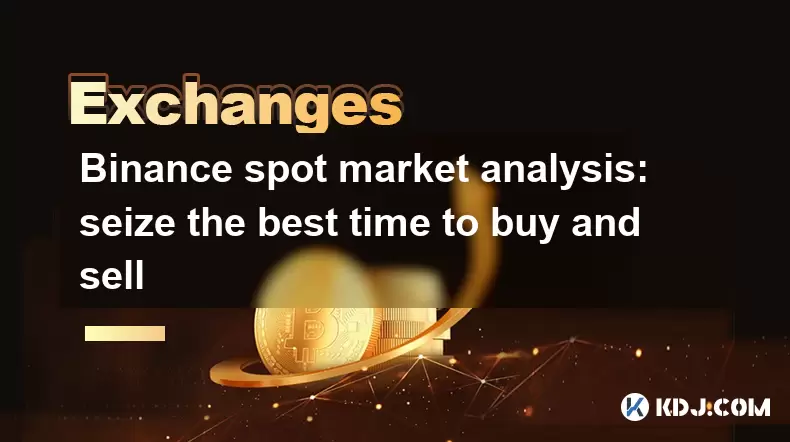
Binance spot market analysis: seize the best time to buy and sell
Jun 19,2025 at 04:56pm
Understanding the Binance Spot MarketThe Binance spot market is one of the most popular platforms for cryptocurrency trading globally. It allows users to trade digital assets at current market prices, making it essential for traders aiming to buy low and sell high. Unlike futures or margin trading, spot trading involves direct ownership of the asset aft...
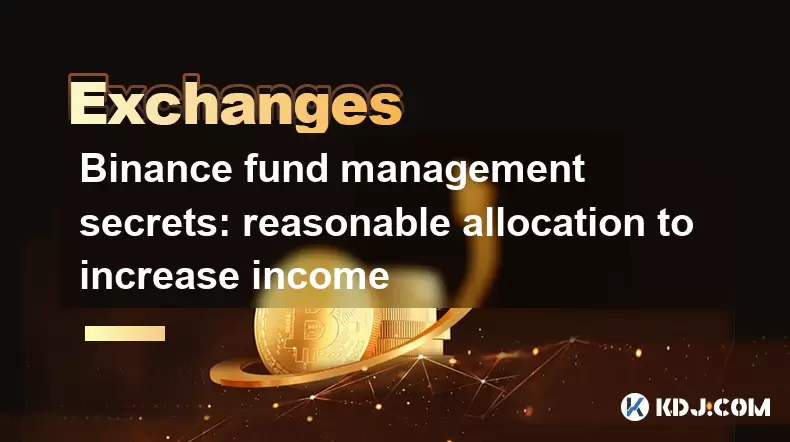
Binance fund management secrets: reasonable allocation to increase income
Jun 22,2025 at 02:29pm
Understanding Binance Fund ManagementBinance fund management involves strategic allocation of your cryptocurrency assets to optimize returns while managing risk. The key to successful fund management lies in understanding how different investment options on the Binance platform can be utilized to create a diversified portfolio. This includes spot tradin...
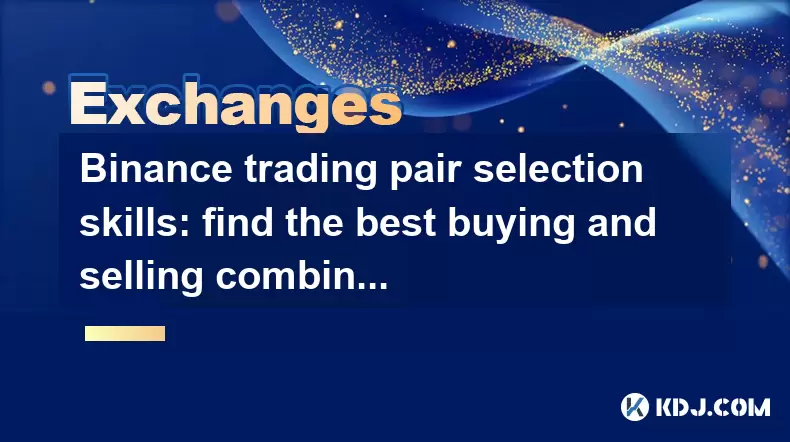
Binance trading pair selection skills: find the best buying and selling combination
Jun 23,2025 at 02:49am
Understanding the Basics of Trading Pairs on BinanceBefore diving into trading pair selection skills, it's essential to understand what a trading pair is. On Binance, a trading pair refers to two cryptocurrencies that can be traded against each other. For example, BTC/USDT means Bitcoin is being traded against Tether. Each trading pair has its own liqui...
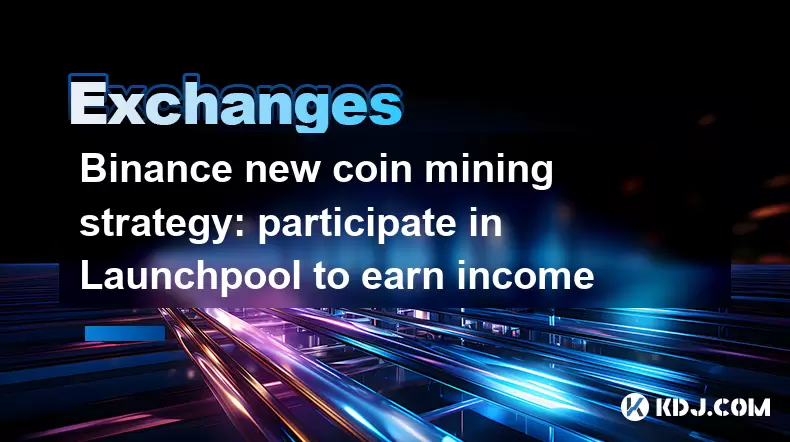
Binance new coin mining strategy: participate in Launchpool to earn income
Jun 23,2025 at 11:56am
What is Binance Launchpool and how does it work?Binance Launchpool is a feature introduced by the world’s largest cryptocurrency exchange, Binance, to allow users to earn new tokens through staking. This platform enables users to stake their existing cryptocurrencies (such as BNB, BUSD, or other supported assets) in exchange for newly launched tokens. T...
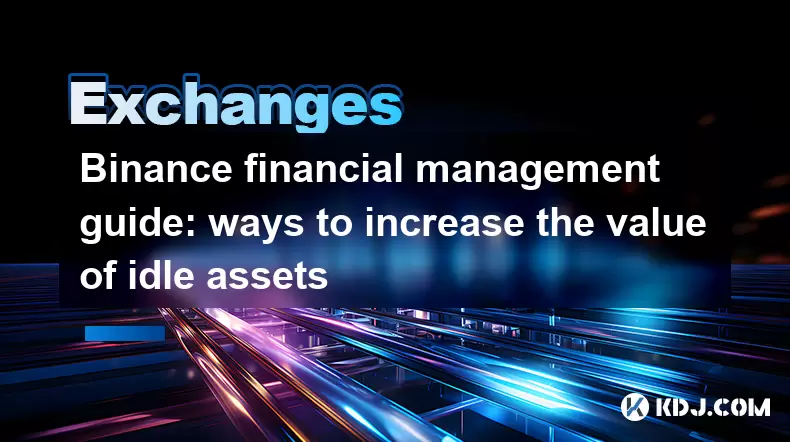
Binance financial management guide: ways to increase the value of idle assets
Jun 19,2025 at 11:22pm
Understanding Idle Assets in the Cryptocurrency SpaceIn the fast-paced world of cryptocurrency, idle assets refer to digital currencies that are not actively being used for trading, staking, or yield farming. Holding these funds in a wallet without utilizing them means missing out on potential growth opportunities. Binance, as one of the leading platfor...
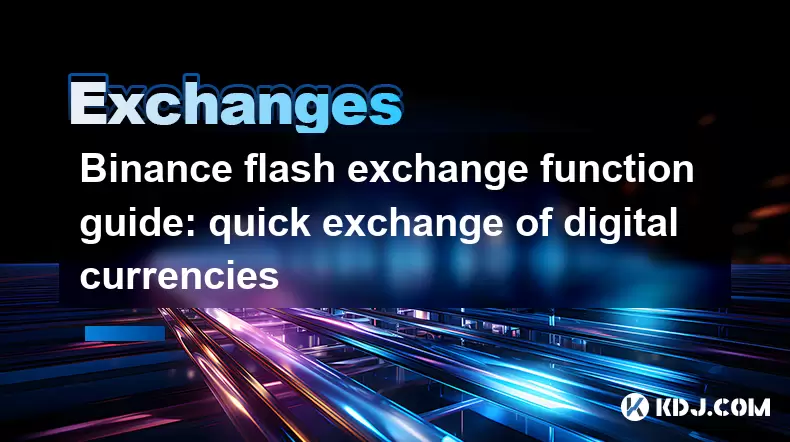
Binance flash exchange function guide: quick exchange of digital currencies
Jun 23,2025 at 12:29pm
What is the Binance Flash Exchange Function?The Binance Flash Exchange function is a powerful tool designed to allow users to instantly swap between supported cryptocurrencies without the need for placing traditional buy/sell orders. This feature simplifies the trading process by offering a direct exchange mechanism, eliminating the requirement to conve...

Binance spot market analysis: seize the best time to buy and sell
Jun 19,2025 at 04:56pm
Understanding the Binance Spot MarketThe Binance spot market is one of the most popular platforms for cryptocurrency trading globally. It allows users to trade digital assets at current market prices, making it essential for traders aiming to buy low and sell high. Unlike futures or margin trading, spot trading involves direct ownership of the asset aft...

Binance fund management secrets: reasonable allocation to increase income
Jun 22,2025 at 02:29pm
Understanding Binance Fund ManagementBinance fund management involves strategic allocation of your cryptocurrency assets to optimize returns while managing risk. The key to successful fund management lies in understanding how different investment options on the Binance platform can be utilized to create a diversified portfolio. This includes spot tradin...

Binance trading pair selection skills: find the best buying and selling combination
Jun 23,2025 at 02:49am
Understanding the Basics of Trading Pairs on BinanceBefore diving into trading pair selection skills, it's essential to understand what a trading pair is. On Binance, a trading pair refers to two cryptocurrencies that can be traded against each other. For example, BTC/USDT means Bitcoin is being traded against Tether. Each trading pair has its own liqui...

Binance new coin mining strategy: participate in Launchpool to earn income
Jun 23,2025 at 11:56am
What is Binance Launchpool and how does it work?Binance Launchpool is a feature introduced by the world’s largest cryptocurrency exchange, Binance, to allow users to earn new tokens through staking. This platform enables users to stake their existing cryptocurrencies (such as BNB, BUSD, or other supported assets) in exchange for newly launched tokens. T...

Binance financial management guide: ways to increase the value of idle assets
Jun 19,2025 at 11:22pm
Understanding Idle Assets in the Cryptocurrency SpaceIn the fast-paced world of cryptocurrency, idle assets refer to digital currencies that are not actively being used for trading, staking, or yield farming. Holding these funds in a wallet without utilizing them means missing out on potential growth opportunities. Binance, as one of the leading platfor...

Binance flash exchange function guide: quick exchange of digital currencies
Jun 23,2025 at 12:29pm
What is the Binance Flash Exchange Function?The Binance Flash Exchange function is a powerful tool designed to allow users to instantly swap between supported cryptocurrencies without the need for placing traditional buy/sell orders. This feature simplifies the trading process by offering a direct exchange mechanism, eliminating the requirement to conve...
See all articles

























































































